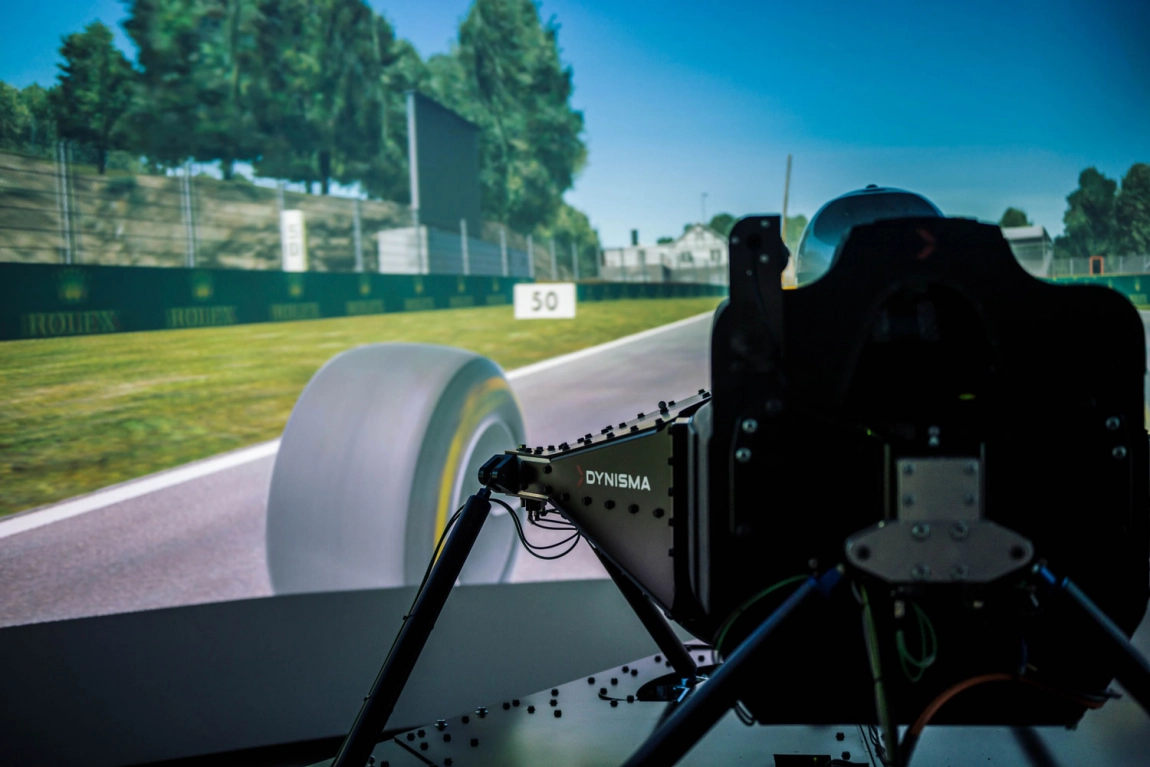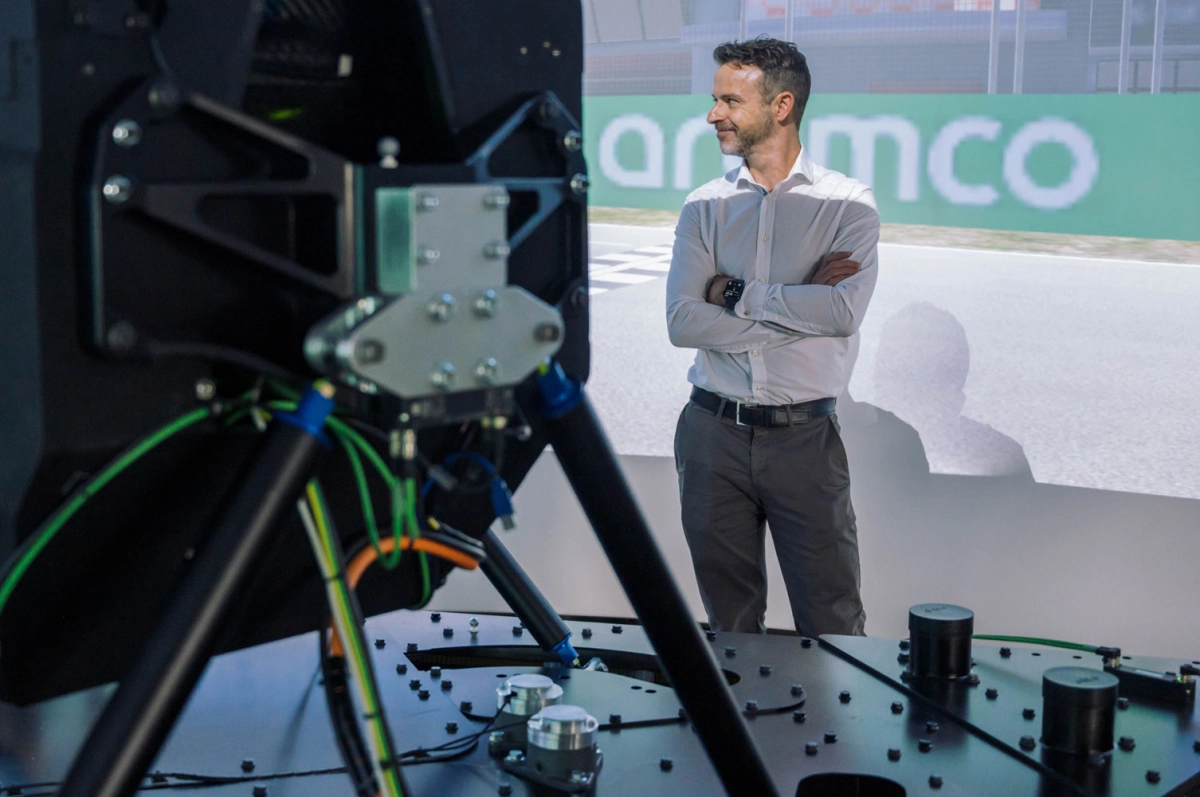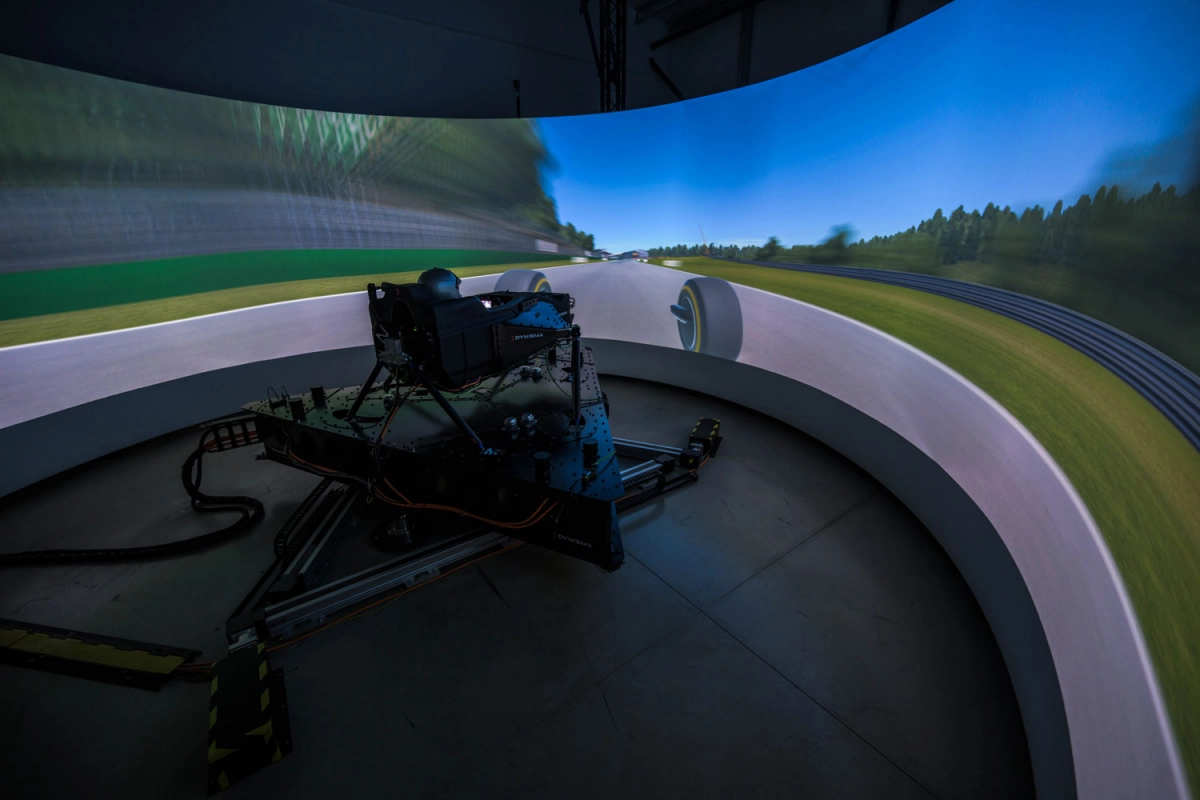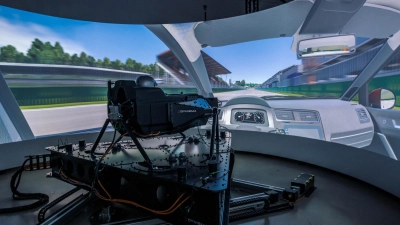
From the outside, the world of motorsport may seem focused on nothing but shaving tenths of a second off a lap time but, like all global industries, sustainability is at the top of the agenda too.
The drive to be more sustainable is rapidly accelerating, with various push and pull factors at play, from corporate ESG programmes to FIA rulings - for instance, members need to have reached carbon neutrality by 2030, as well as achieving a 3-star FIA Environmental Accreditation.
And state-of-the-art motion simulators, like those designed, developed and manufactured by Dynisma, have a crucial role in enabling all teams – not just those in F1 – to become greener.
How? Well, almost 75% of motorsport sector emissions come from logistics1. Reducing travel is key – and much of the non-essential travel outside of races comes from real-world testing.
Virtual testing is therefore an important tool to help achieve sustainability. For example, one top level motorsport organisation completes 250,000 simulator miles per year across all the racing series in which it competes. This equates to savings of 450t of CO2, £0.4m in fuel, £8m in tyres and £1.2m in crash repair, compared to miles being driven in the real world.
However, for a simulator to substitute for real world testing, it has to be exceptionally realistic – and because of cost, this technology is often only available to top-level motorsport teams. Within F1, where teams are benefitting from well-correlated, high-performance simulators, a large reduction in track testing has already been seen. In 2010, teams had 165 days of pre-season testing, reduced to just three in 2021. In terms of in-season testing, in 2000 teams were able to complete unlimited miles, by 2018 this was reduced to 230km.
Looking at the benefit per lap, it’s very easy to see how impactful this reduction can be in achieving sustainability goals. For a lap of the Circuit de Barcelona (4.657km), real-world testing would result in 4.8kg of CO2 emissions, while the same lap in a Dynisma simulator results in just 0.1kg – a 98% reduction per lap. There is also an indirect benefit of saving 19.7t of CO2 in team and equipment travel (calculated for a 1-day test at the Circuit de Barcelona for a UK-based team). To be able to take a similar approach in the reduction of real-world testing in other series, costs need to be lowered to increase accessibility to technology.

Previously, commercially available motion simulators, particularly those that were affordable to anyone outside of F1, lacked realism and drivers felt they were not advanced or accurate enough to replace real world testing. It also wasn’t possible to use these simulators to work on vehicle dynamics and event preparation, so real world testing was still required to set up the car.
High-end, realistic simulators need to be available and accessible to all levels of motorsport. And to create the most accurate and immersive driving simulator, the motion system, visuals, circuit models and vehicle model, all have to be of the same high standard. If any one of these isn’t, accuracy and immersion suffers, resulting in poor or unusable data and even motion sickness in drivers due to the latency of motion. Often the biggest quality drop as price decreases is the motion system. For many teams it is the piece of the puzzle preventing the unlocking of virtual testing.

Dynisma DMG-1 simulator has been created as a standard productionised simulator, but with F1 grade technology, bringing the essential performance and functionality of a bespoke F1 driver-in-loop simulator within the reach of other racing categories from F2 and Formula E, to WEC and GT racing. We’ve cost engineered our unique patented motion technology to bring the entry costs as low as £1.3m and are working on future solutions between £500k and £1m. All with the low latency (3-4ms), high bandwidth (50hz – 100hz) and equal accuracy in all 6 degrees of freedom, that enables our customers to achieve a level of correlation to substitute real world testing.
At Dynisma, we believe the motorsport sector as a whole could abandon the vast majority of track testing if teams had access to the right levels of technology. Our DMG-1 system could be a game changer, enabling other forms of motorsport to follow F1 in drastically reducing test days, helping the entire industry to become more sustainable, achieving its NetZero goals. And without sacrificing a tenth of a second off lap times either.
-Ends-

